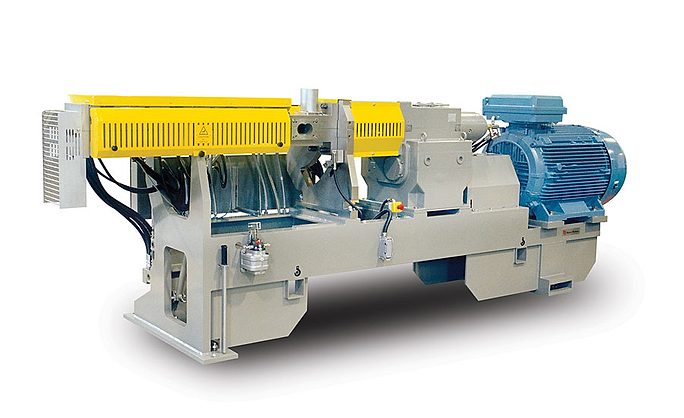In the world of industrial manufacturing—whether coatings, plastics, inTitanium dioxideks, or construction materials—color isn’t just aesthetic. It affects performance, durability, heat resistance, chemical stability, and even regulatory compliance. This makes pigment selection a critical step for manufacturers aiming for long-term reliability and brand consistency.
Among the wide spectrum of colorants available today, organic and inorganic pigments remain the two dominant categories. Each comes with its own strengths and limitations, making them suitable for different industrial applications. Understanding these differences helps manufacturers choose pigments that not only look good but also perform consistently under demanding conditions.
This guide breaks down the science, performance characteristics, and application suitability of organic vs. inorganic pigments, and helps you determine which type is best for your product.
Understanding Organic Pigments
Organic pigments are carbon-based molecules, often derived from synthetic chemistry rather than natural sources. Their molecular structures allow for brilliant, high-chroma colors, making them ideal for applications that require vibrancy and visual impact.
Key Characteristics of Organic Pigments
Organic pigments are known for:
-
Bright, pure colors with high chroma
-
Excellent tinting strength, allowing less pigment to achieve strong coloration
-
Transparent or semi-transparent appearance, beneficial for inks and thin-film coatings
-
Low density, resulting in easier dispersion
However, organic pigments may exhibit:
-
Lower heat resistance
-
Reduced weatherability without surface treatment
-
Lower chemical resistance compared to inorganics
These characteristics make organic pigments popular for printing inks, packaging materials, consumer goods, toys, cosmetics packaging, and decorative coatings.
Understanding Inorganic Pigments
Inorganic pigments are typically mineral-based compounds such as oxides, sulfides, and chromates. They are valued for their exceptional durability, making them indispensable in harsh industrial environments.
Key Characteristics of Inorganic Pigments
Inorganic pigments offer:
-
Outstanding heat and weather resistance
-
Superior opacity and covering power
-
Chemical and UV stability
-
Compatibility with demanding industrial processes
Their trade-off is aesthetic:
-
Less bright, primarily earthy or muted tones
-
Lower tint strength compared to organic pigments
Inorganic pigments are widely used in automotive coatings, heavy-duty industrial coatings, outdoor plastics, construction materials, and heat-exposed applications.
Performance Comparison: Organic vs. Inorganic
The best way to select the right pigment is to evaluate them across key performance criteria relevant to industrial applications.
Color Strength and Brightness
Organic pigments typically win in vibrancy. Their molecular structures allow for intense absorption and reflection of specific wavelengths, producing clean, bright colors.

Inorganic pigments, on the other hand, have muted tones but offer unmatched opacity, making them ideal when hiding power is critical.
Heat and Weather Resistance
When it comes to durability, inorganic pigments outperform by a wide margin. High temperatures, UV radiation, and harsh outdoor conditions rarely affect their performance.
Organic pigments can fade or degrade under UV exposure unless they are specially engineered or coated.
This difference is why:
-
Automotive coatings often rely on inorganics
-
Packaging and indoor products frequently use organics
Chemical Resistance
Industrial environments expose materials to acids, alkalis, solvents, and cleaning agents. Inorganic pigments resist chemical attack far better, making them preferred in:
-
Oil and gas pipelines
-
Machinery coatings
-
Chemical storage tanks
-
Marine applications
Organic pigments are suitable for less chemically aggressive environments.
Processing Requirements
Different manufacturing processes—extrusion, calendering, injection molding, high-temperature curing—place different demands on pigments.
Organic pigments:
-
Better for lower-temperature processes
-
Offer excellent dispersion
-
Ideal for thin films
Inorganic pigments:
-
Can tolerate high-temperature processing
-
Maintain stability during polymer melt processing
-
Essential for engineering plastics such as polycarbonate or nylon

Cost Considerations
Pigment cost is not just the price per kilogram; it includes long-term performance.
Organic pigments:
-
Often more expensive in bright shades
-
Provide high tint strength, requiring less pigment
Inorganic pigments:
-
Typically more affordable
-
Offer long-term durability, reducing repainting or replacement cycles
For large-scale outdoor projects or machinery, inorganic pigments usually provide better total cost value.
Applications Where Organic Pigments Excel
Packaging and Consumer Goods
Consumers are heavily influenced by color, and brand consistency is critical. Organic pigments provide the vibrancy needed for:
-
Cosmetic packaging
-
Food containers (with compliant grades)
-
Household products
-
Toys and stationery
Their lightness and low density make them easy to disperse in polymers.
Printing Inks and Digital Inks
Transparency and high chroma make organic pigments ideal for:
-
Inkjet inks
-
Flexographic printing
-
Gravure printing
These applications require intense coloration with smooth dispersion.
Automotive Interiors
While outdoor automotive coatings rely heavily on inorganics, interior parts often use organics due to their color variety and visual appeal.
Applications Where Inorganic Pigments Excel
Automotive and Industrial Coatings
Heat stability and weather resistance make inorganic pigments indispensable for:
-
Vehicle exteriors
-
Protective coatings for steel
-
Construction machinery
Engineering Plastics
High-temperature polymers such as:
require pigments that won’t degrade during processing. Inorganic pigments provide the necessary stability.
Building & Construction Materials
Cement, concrete, and outdoor plastics rely on inorganics for fade resistance and long-term durability.

Environmental and Regulatory Considerations
Environmental standards differ between pigment groups.
Organic pigments:
-
Increasingly compliant with global safety standards
-
However, require careful evaluation of VOC emissions and migration behaviors in sensitive applications
Inorganic pigments:
-
Many traditional types (like lead chromates) are regulated or restricted
-
Modern options (iron oxides, titanium dioxide) offer excellent compliance and eco-friendliness
Manufacturers must balance performance needs with REACH, RoHS, FDA, and regional environmental requirements.
So… Which Pigment Performs Better?
The answer depends entirely on your application.
Choose organic pigments if you need:
-
Brilliant colors
-
High tint strength
-
Transparency
-
Aesthetic appeal
Choose inorganic pigments if you need:
-
Extreme durability
-
UV and weather resistance
-
Heat stability
-
Chemical resistance
In many industries, the best solution is not choosing one or the other—but using both to achieve optimal performance and color design.
Conclusion: Matching Pigment Performance to Industrial Needs
Organic and inorganic pigments each bring unique advantages. The key to long-term product performance is aligning pigment selection with the environmental, mechanical, and aesthetic demands of your application.
Whether you are producing coatings, plastics, inks, or construction materials, understanding these differences ensures more consistent results and fewer production issues.
If your products require long-term reliability, consistent coloration, and dependable supply, partnering with a professional pigment supplier becomes essential.





